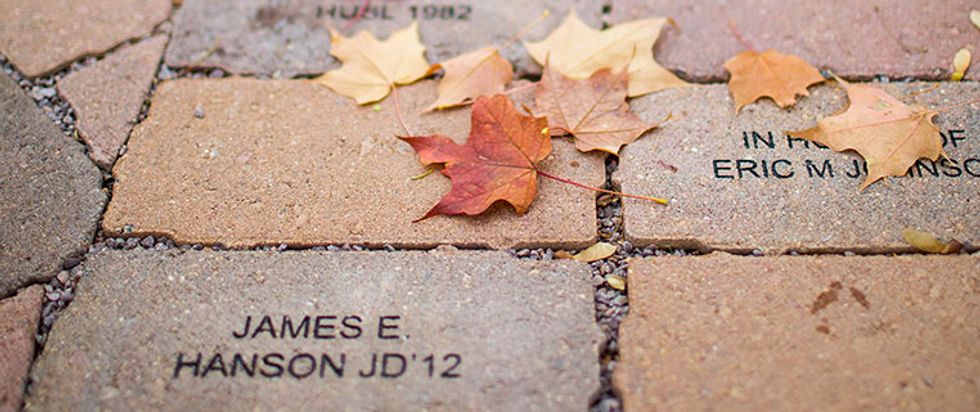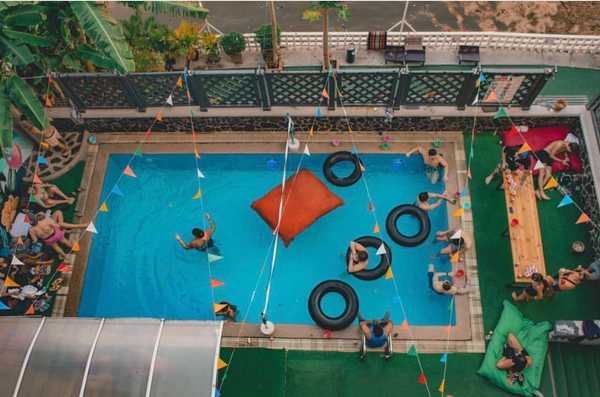You’ve probably taken in a crisp breath of air on a sunny day at Hamline, enjoying yourself in the range of natural ambiguities that this campus has to offer. Outdoors often interacts with the learning process, such as the droves of snow outside windows or a distracting bee in class.
Hamline itself is renowned for its ties to nature, with scenic locations in the middle of campus such as the Blue Garden, and the and the grass that’s growing on top of Anderson.
Weather permitting, both bees and students can buzz around hamline with relative ease, enjoying the simplicities of nature in the Twin Cities backyard. However, looking at everything there is to see, (and there is a lot), one question is tickling the back of our minds like an autumn leaf; Who makes the magic happen around here?
In a botanical sense, the magic comes from Hamline’s own Ken Dehkes, Director of Facilities Operations and Horticultural Services. Working as a grounds supervisor and up, you could say he’s an expert when it comes to all things natural.
“It’s not like it’s rocket science-I hope it looks easy, but it’s fairly sophisticated. I care about the earth, and am very much an ecologist, ever since I learned the word in sixth grade.” Dehkes reminisces.
He and his team of four dedicated assistants (and a few 1000 student volunteers) are in charge of keeping the campus the way it is; Convenient, beautiful, and environmentally friendly.
The all-telling interview with Dehkes on november 3rd revealed much in the ways of what Hamline is essentially ‘up too’ during every season. Despite shutting off main water valves three weeks ago, Dehkes and his crew still have their work cut out for them.
“Here at hamline, we have about 7.4 miles of sidewalks on our 60-acre campus. Narrowing it down to the few city blocks we clean up,we essentially have over 11 and ½ miles that we maintain. That’s like walking from St. Paul to Minneapolis, and back to Hamline. And that doesn't cover our parking lot.” Dehkes said, jokingly serious.
As it began to come down in light, fluffy droves, he began to explain in detail about how conscientious Hamline is, down to the sidewalks we take everyday.
“We have sidewalks with pervious pavers- essentially specific paving ‘water legos’” Dehkes elaborates. He goes on to explain that the bricks we have are aquificious, and allow the rain and snow water to back into the ground, a prime example being the bricks in Alumni way.

“We have an impact on what we put in the river, and in our aquifers, and how we’ve developed as people spreading awareness. Hamline recognizes that what it can do is manage storm drains that lead to the Mississippi. The good thing here is we’re at the start [of the river].”
Decks explained why Hamline relies on snow shoveling rather than dumping salt on their sidewalks. In this, he urges others to do the same.
“Do salt if you have to, and limit it to icy areas.” He advises. Dehkes rarely uses the chloride ‘salt’ itself, even while having to maintain a large campus.
“I do the things that I do because I have a better shot, basing it on the long term results. Move snow out as quick as you can, and physically remove the ice itself after salting.” Dehkes says he took a day to go through an educational programme with his co-workers to learn how to handle salt, and not misuse it.
Dehkes also refuses to use insecticides or things like Round-Up on campus grounds. “It’s OK that there’s a dandelion or two. Here is a landscape that features plants and is adaptable and changeable. Even here in the Twin Cities, the urban landscape supports that. It supports variety.”
Our campus is full of variety when it comes to design, plant life, and general aesthetics. Dehkes tells us this was intentional.
“Worrying about trying to direct creates a negative impact on the environment. One level of it is trying to have a really good, well thought out design, one that meets needs and uses. This place is no versailles or Disneyworld- Hamine has more curvy, random shapes that helps bring together buildings, such as Old Main being adjacent to Robbins Science Center.”
He goes on; “In a subtle way, development tries to work with the land and plants, making someone walking around here instantly recognize, ‘I’m on Hamline Campus.’”



















